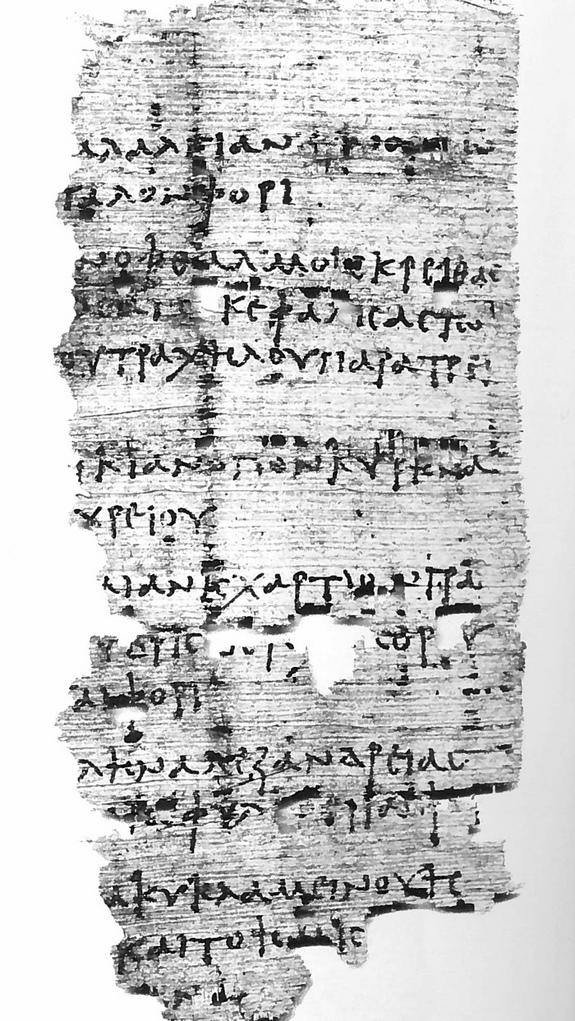
Picture Above: This recent translated papyrus, dating back to the second century, contains a recipe for several ailments.
Hiding a hangover in ancient
Egypt would've taken some work. Rather than popping an ibuprofen for a
pounding drunken headache, people in Egypt may have worn a leafy
necklace.
That's according to a newly translated and published papyrus written in Greek with the recipe for a "drunken headache" cure. The alcohol victim would have strung together leaves from a shrub called Alexandrian chamaedaphne (Ruscus racemosus L.), possibly wearing the strand around the neck, the text revealed.
Though people in the ancient world believed Alexandrian chamaedaphne
could ease a headache, whether the cure really worked, let alone on a
drunken headache, is unknown. [Myth or Truth? 7 Ancient Health Ideas Explained]
Largest collection of medical papyri
The 1,900-year-old papyrus containing the hangover treatment is one of
over 500,000 such documents found in the ancient Egyptian town of
Oxyrhynchus by researchers Bernard Grenfell and Arthur Hunt about a
century ago.
The study and publication of so many papyri is a long and slow task that
has been going on for a century. Recently, volume 80 was published,
containing studies and decipherments of about 30 medical papyri found at
Oxyrhynchus, including the papyrus with the hangover treatment.
This newly published volume represents "the largest single collection
of medical papyri to be published," wrote Vivian Nutton, a professor at
University College London, at the beginning of the volume. The
collection includes medical treatises and treatments for a wide variety
of ailments, including hemorrhoids, ulcers, tooth problems and even some fragments discussing eye surgery.
The writers of these ancient papyri relied heavily on Greek knowledge.
The ancient residents of Oxyrhynchus strongly embraced Hellenistic
(Greek-influenced) culture, something that spread throughout Egypt, and
the wider Middle East, after the conquests of Alexander the Great, Nutton said.
Eye recipes
Some of the most interesting treatments in the texts deal with the eyes.
One text contains about a dozen recipes for an eye-cleaning lotion
called collyrium. One such recipe meant to treat rheum, a discharge of
mucus from the eyes, contains a medley of ingredients, including copper
flakes, antimony oxide, white lead, washed lead dross (produced in
smelting), starch, dried roses, rainwater, gum Arabic, poppy juice and a
plant called a Celtic spikenard.That treatment seems relatively mild compared with techniques for eye surgery laid out in the collection. One fragment contains what appears to be a first-person account of surgery performed on an everted eyelid, an eyelid that has turned inside out causing irritation. The text is fragmentary, and some of the words are uncertain; however, it's clear this was not an operation for the faint of heart, especially given that anaesthesia hadn't been invented yet.
Part of it reads: "… the eye … I began … by the temple … the other from the temple … to remove with a small round-bladed knife … the edge of the eyelid from outside … from within until I scooped out …" (translation by Marguerite Hirt, a researcher at the University of Cambridge who analyzed the text).
The medical papyri are now owned by the Egypt Exploration Society and are kept at the Sackler Library at Oxford University.

Picture above: This papyrus, found in Oxyrhynchus in Ancient Egypt, contains a tooth powder recipe said to help with gum problems.
